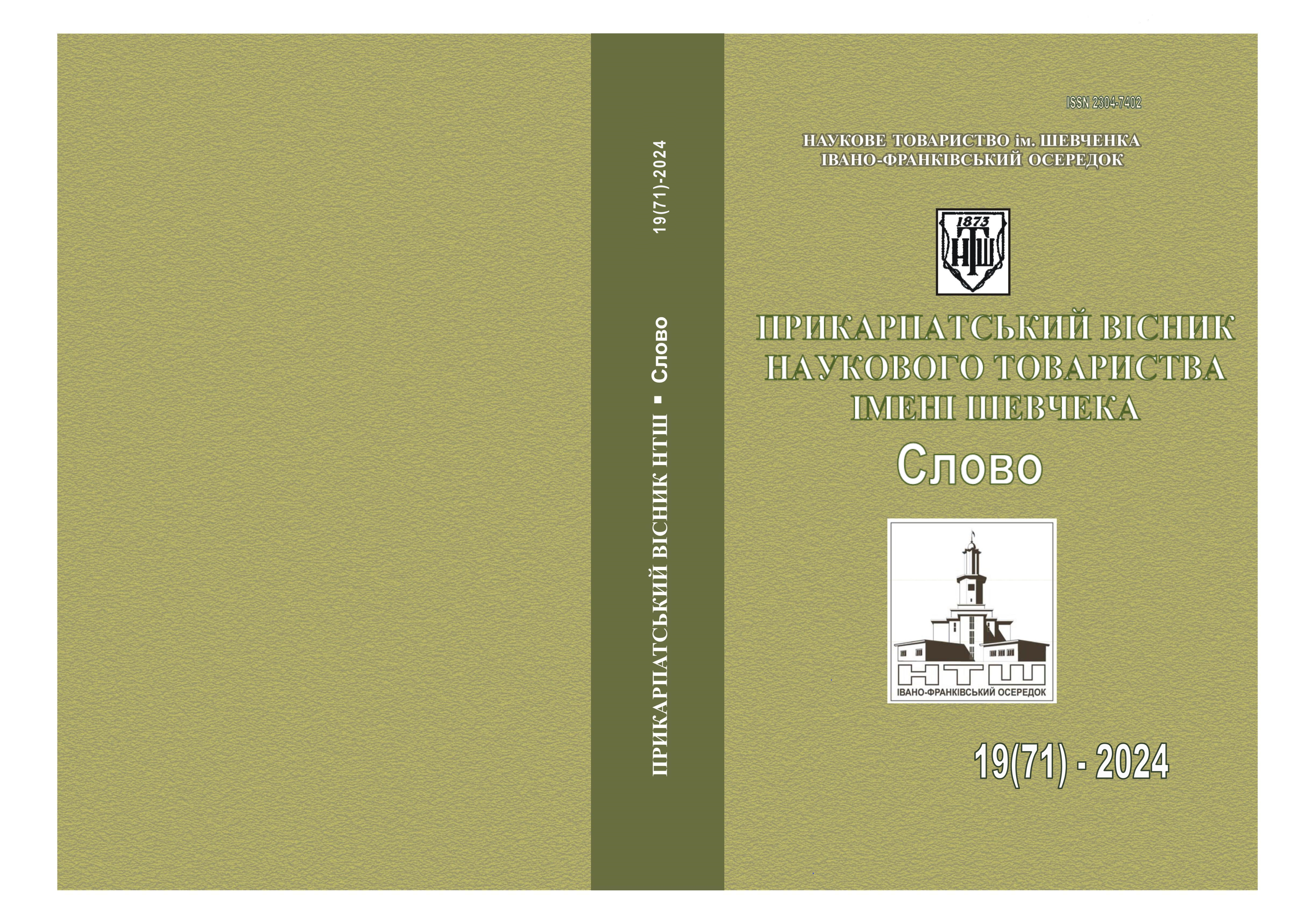FRAGMENT OF COMPARATIVE PHRASEOLOGY (PHRASEOLOGICAL UNITS WITH THE LIVER COMPONENT)
DOI:
https://doi.org/10.31471/2304-7402-2024-19(71)-229-245Keywords:
phraseological unit, somatism, phraseology, meaning, liver.Abstract
The text discusses the importance of studying phraseology with somatic components in various languages, particularly Slavic languages.Such phraseological units (PFUs) play a significant role in language aesthetics and serve as a reliable source for understanding cultural heritage and people's aspirations. They also reflect the spirit and beauty of language. The analysis of recent research in the field emphasizes the need to explore the linguistic worldview and mentality through PFUs, especially those with somatic components.
The article highlights the relevance of comparative phraseology with somatic components in Slavic languages. It mentions several researchers who have studied phraseology in Polish, Ukrainian, Russian, Bulgarian, Croatian, and Slovenian. Comparative studies have also emerged, focusing on multiple languages. The primary goal of the article is to compare PFUs with somatic components in different languages and examine their specific usage through semantic field analysis and comparative analysis. The theoretical significance lies in further exploring the semantics of phraseology and comparative phraseology. The practical value includes the identification of common features and differences among PFUs in different languages, facilitating translation and foreign language learning. The main material presented in the article revolves around the use of somatic components in phraseology, reflecting cultural traditions and subjective factors in language.
The text explains that somatic phraseology represents a substantial portion of phraseological units in any language, accounting for approximately 30% of all fixed phraseological combinations. Human beings tend to transfer their self-knowledge into their surroundings, thus using somatic components to understand the world. PFUs with somatic components demonstrate a high degree of motivation, complex cognitive structures, and employ conceptual metaphors and metonymies.
Different categories of somatic components are identified, including body parts, bones, internal organs, sensory organs, and diseases. These components contribute to the creation of new idioms. Phraseology with somatic components serves as a linguistic reflection of emotional understanding and subjective expressions of reality.
The liver is discussed as a specific somatic component, which is less common in phraseology due to various reasons, including its internal nature and lack of direct physical appearance. Nevertheless, it holds symbolic significance in many cultures as a source of vitality and inspiration. The analysis aims to uncover the semantic relationships associated with the somatic component "liver" in different languages.
Overall, the text highlights the importance of studying phraseology with somatic components in Slavic languages, emphasizing their cultural, linguistic, and semantic significance.
References
Szpila G. Dolnołużycka frazeologia somytyczna. Slavia occidentalis. Nr 74 (1). S. 135 -155.
Wielki słownik języka polskiego. URL: https://www.wsjp.pl/index.php?id_hasla=9150&id_znaczenia=1079056&l=27&ind=0
05.2023].
Балли Ш. Французская стилистика / Ш. Балли. – М.: Иностр. лит., 1961. – 394 с.
Вайнтрауб Р. М. О соматических фразеологизмах в русском языке. Лексические единицы русского языка и их изучение. Ташкент: Ташк. гос. пед. ин-т, 1980. С. 51–55.
Вакк Ф. О соматических фразеологизмах эстонского языка. Вопросы фразеологии и составления фразеологических словарей. Баку, 1968. С. 152–155.
Жуйкова М. В. «Словникова» анатомія людини: особливості тлумачення соматичної лексики у словниках української, польської, російської та англійської мов // Вісник Харківського національного університету імені В. Н. Каразіна. Серія «Філологія» − Харків, 2020 − №86 – С. 87-95.
Лабінська Б. І. Німецькі фразеологізми з компонентом на позначення фізичного стану людини. Автореф. дис. канд. філол. наук: 10.02.04; Львів. нац. ун-т ім. І. Франка. – Л., 2004. – 20 с.
Словник української мови в 11 томах Київ : Наукова думка. 1970–1980 рр.
Ужченко В. Д. Слова – символи в народній фразеології / В. Д. Ужченко // Українське мовознавство. – 1989. – Вип. 4. – 14 с.

